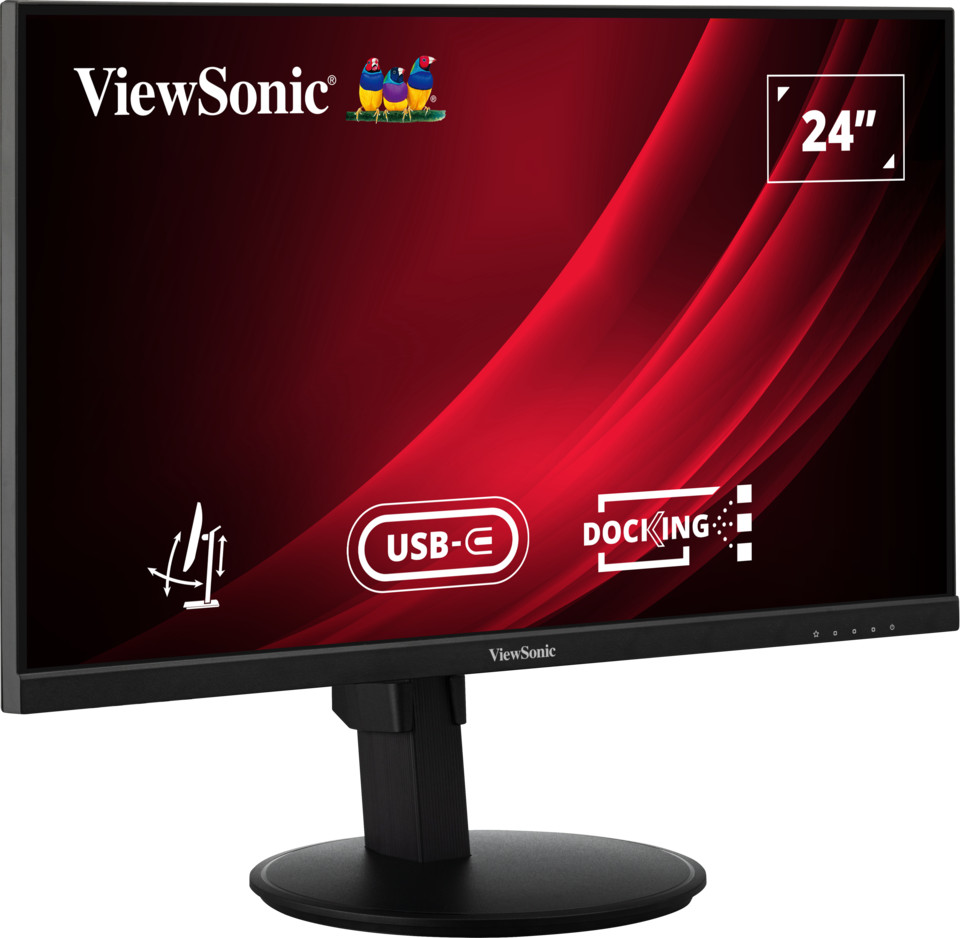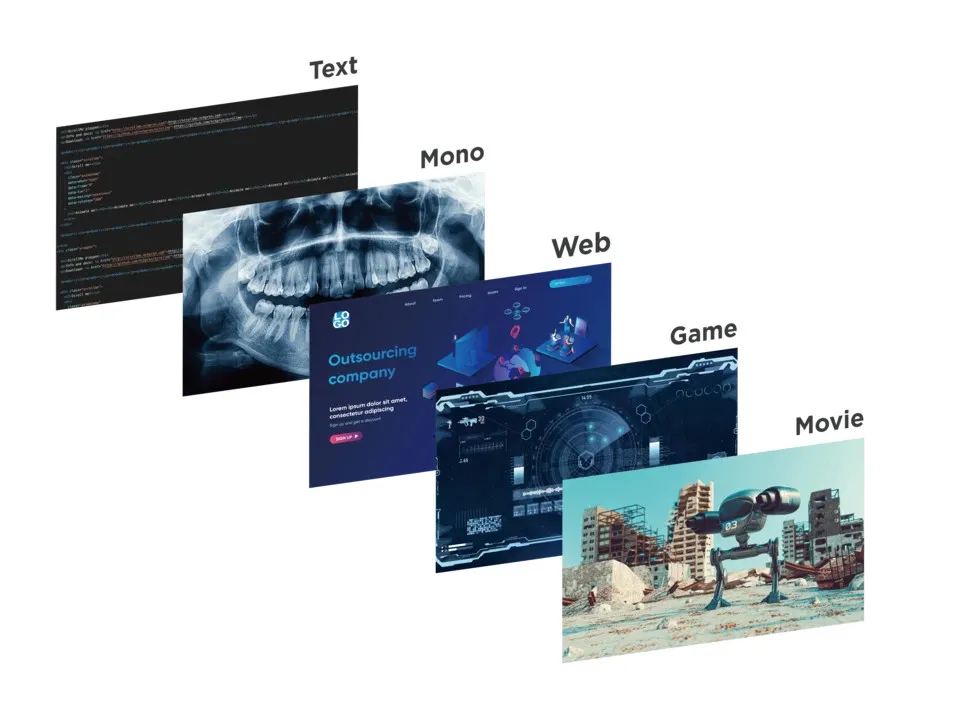











































£201.40*
- Resolution 1920 x 1080 Full HD
- Diagonal 24"
- Panel type IPS
- Refresh Rate 100Hz



Product information
The ViewSonic VG2409U-2 is a 24-inch FHD monitor with USB 3.2 hub with 1 upstream and 2 downstream ports, HDMI, DisplayPort and DisplayPort Out for business and home use. Equipped with 65W USB-C ports, Ethernet and daisy-chain support, the VG2409U-2 serves as a fully integrated docking station for charging, audiovisual and data transmission and network connectivity, effectively reducing cable clutter. The variable refresh rate of 100 Hz, Eye ProTech technology and various ViewMode presets ensure optimal screen performance and a comfortable display without tearing or stuttering. Expand your workspace and experience seamless, ergonomic multitasking on just one screen with a VESA-compatible mount and low power consumption.
Highlights:
- Integrated USB-C docking station with Ethernet, daisy-chain capability and charging power of up to 65 W
- USB 3.2 hub with 1 upstream, 2 downstream ports, HDMI and DisplayPort inputs for easy connectivity
- Variable refresh rate of 100 Hz delivers smooth images
- Ergonomically tiltable, swivelling, rotatable and height-adjustable
- TCO, EnergyStar and EPEAT Silver certified for sustainability
Ergonomic workstation with one cable solution
Discover a monitor that simplifies your work, increases your productivity and ensures comfort at your workplace thanks to a single cable solution and ergonomic design.

Integrated docking station with daisy chain
The docking capability of the VG2409U-2 streamlines workflows by eliminating the need for dongles and adapters. USB-C ensures seamless data, video and audio transfer and offers 65W charging power, complemented by an integrated Ethernet port (RJ45) for stable high-speed connections. The DisplayPort output can be easily connected to another monitor for a productivity-enhancing workstation setup.

Exceptional wide-angle viewing
Enjoy vivid colours with consistent brightness and amazing accuracy, no matter the viewing angle. The SuperClear® IPS monitor offers an ultra-wide 178-degree vertical and horizontal viewing angle, delivering the same image quality with true colour accuracy and consistency from screen to print.

Full HD 1080p
The Full HD resolution of 1920x1080 pixels ensures incredibly clear, pixel-perfect picture performance. Experience breathtaking clarity and detail when working, gaming or watching the latest series premieres.

Smooth images with a variable refresh rate of 100 Hz
With a fast variable refresh rate of 100 Hz, you will experience a truly smooth display. This results in improved image sharpness, less image judder during fast action scenes and makes work easier by reducing eye strain and increasing productivity.

Flexibility when connecting
Thanks to the HDMI, DisplayPort(DP) and DisplayPort(DP) outputs, you can connect your monitor to a wide range of devices. Simplify your workspace, expand your connectivity options and optimise data transfer with our monitor's integrated USB hub, which has an integrated RJ45 port for Ethernet (RJ45).
Full ergonomic flexibility
Swivel the screen effortlessly up to 360°, tilt it up to -3.5°~28°, raise it up to 130 mm and swivel it up to 180° for portrait viewing. The VG2409-MHDU-2 offers a wide range of practical flexibility for all tasks and workflows.

Built-in speakers
This monitor is equipped with two 2.5-watt stereo speakers and incredible screen performance, offering an immersive multi-sensory experience.
Eye ProTech for comfortable viewing
Reduce eye strain and keep your eyes feeling fresh with ViewSonic Eye ProTech. Flicker-free technology eliminates screen flicker, while the blue light filter minimises harmful blue light during prolonged viewing, ensuring a comfortable screen experience.

Options for colour reproduction
ViewSonic's ViewMode offers the presets "Game", "Film", "Web", "Text" and "Mono". These presets enhance the gamma curve, colour temperature, contrast and brightness to ensure an optimal and satisfying display.

Technical data
| Name | ViewSonic VG2409U-2 24" IPS Monitor, 1920 x 1080 Full HD, 100Hz, 4ms |
|---|---|
| Article number | 1000033080 |
| GTIN/EAN | 0766907028768 |
| Manufacturer SKU | VG2409U-2 |
| EPREL ID | 2056991 |
| Model name | VG2409U-2 |
| Brand | ViewSonic |
| Product Type | Monitor |
| Product Series | ViewSonic VG Series |
| Technology | LCD |
| Panel type | IPS |
| backlight | LED |
| Resolution | 1920 x 1080 Full HD |
| Diagonal | 24" |
| Aspect Ratio | 16:9 |
| Viewing angle - Horizontal | 178° |
| Viewing angle - Vertical | 178° |
| Contrast Ratio | 1,300 :1 |
| Screen finish | Matt |
| Max. Brightness | 350 cd/m² |
| Response time | 4ms |
| Refresh Rate | 100Hz |
| Support - VESA | 100 x 100 |
| Inputs | 1x Displayport , 1x Ethernet , 1x HDMI , 1x USB-B , 1x USB-C , 2x USB-A |
| Outputs | 1x 3,5mm Jack , 1x Displayport |
| heightadjustable foot | 130 mm |
| Features | Flicker Free , HDR10 , pivotable , tiltable |
| Product width | 53.97 cm |
| Product height | 38.98 cm |
| Product depth | 51.98 cm |
| Weight | 3.5 kg |
| Colour | Black |
| EEK Spectrum | A to G |
| Energy efficency class | E |
| Delivery contents | HDMI Cable , Power cable , USB-C Cable , USB cable |
| Condition | New |
| Warranty | 60 Month |
| Warranty type | Swap service Service and support information |
Product safety
| Person responsible for the EU |
|---|
| ViewSonic Technology GmbH |
| Fürst-Leopold-Platz 1 |
| 46284 Dorsten |
| Germany |
| sales-uk@viewsonic.com |



